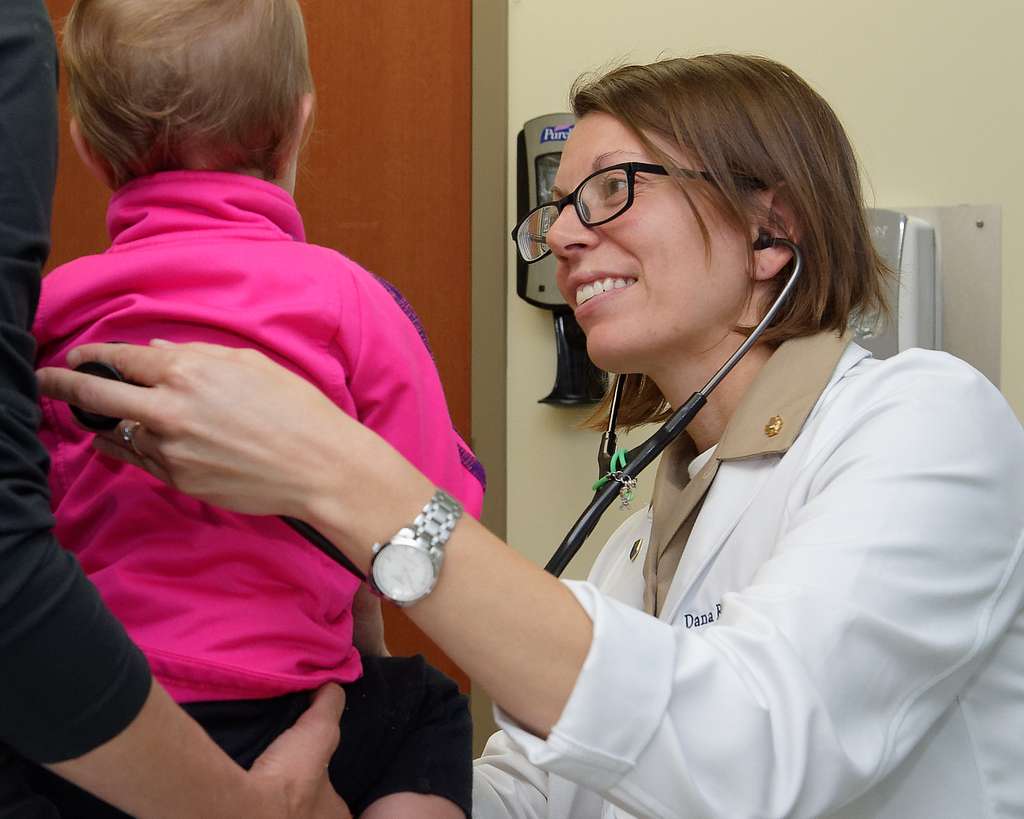Last summer, I contracted a particularly virulent strain of COVID-19. I had a mild fever and my chest would crackle faintly when I exhaled. My symptoms lingered after I recovered. One afternoon, I suddenly felt out of breath and dizzy. Worse, my lips and fingernails were tinted blue. As anyone with hypochondriacal tendencies would do, I turned to the Internet. Dr. Google called it “cyanosis” and insisted I head to the ER. After spending an hour in the waiting room anxiously picking at my hands, I was triaged by a nurse, given a wristband, and sent forth through the promising double doors…to another waiting room. The TV screen read: WAIT TIME: 9h47. And every seat was full. I sat against a concrete brick wall and tried unsuccessfully to distract myself. My heartbeat was echoing in my eyeballs. A nurse called out a name and the woman across from me scrambled out of her seat and, with a minor limp, made her way to the front desk. Meanwhile, a little boy clutching his dad with one hand and gauze against his crown with the other came through the double doors. The little boy with an open head wound took the woman’s seat, blood beading along his hairline. His father took out an iPad to distract the boy, and we all commenced the dreaded countdown.
Family physicians are the backbone of the medical industry and care for everything from infant colic to osteoporosis in the elderly. Canada’s shortage of family physicians is one of the root causes of our oversaturated hospitals and exorbitant wait times. For the millions of Canadians living without a family physician, hospitals and walk-in clinics are their only options for healthcare. However, the lack of staff and overwhelming number of admittances decreases the time that emergency room (ER) doctors can allocate to each patient. The time pressure combined with the ER doctor’s lack of comprehensive knowledge of their patient’s medical history can lead to life-threatening errors. On the other hand, family physicians offer more comprehensive care as they are aware of their patient’s life circumstances, past afflictions, and genetic history. They often chronicle each visit with each patient to form an essential reference point for diagnosing complex illnesses whose symptoms develop gradually. Canada must mediate the growing physician shortage and consequent hospital strain by addressing issues of medical disinterest, administrative responsibilities, and the isolated medical model.

Our lack of family physicians endangers the population by delaying emergency care to those with life-threatening injuries. As of 2022, approximately one in ten Canadians—totaling nearly 4 million individuals—do not have access to a primary healthcare provider; of the residents who do have a regular provider, over 40% visited the hospital because their physician was unavailable. This percentage is likely due to the ratio of practicing family physicians to registered patients, which averaged approximately one physician per 700 patients. This high ratio underlies patients’ difficulty booking appointments with their family physician and consequent reliance on emergency services. People of low socioeconomic standing and Canadian immigrants are less likely than other cohorts to have regular access to a primary care physician. This means that those with poor average living conditions and nutrition are less likely to receive medical care when their compromised immune systems become overwhelmed. This issue is compounded by the reality that these demographics are less likely to have the financial stability necessary to take a day off work for a hospital visit.
Last year, over 60% of those admitted to the hospital for COVID-19 were subsequently discharged. Those patients who were sent home likely experienced anxiety-provoking but not life-endangering symptoms. These patients would have benefitted from a brief conversation with their physician rather than a multiple-hour-long hospital visit, which is strenuous for the patient and our overburdened emergency care facilities. As of 2023, patients hospitalized for COVID-related illnesses remained at the hospital for over one month on average. ER doctors who extend their patients’ visits to monitor their symptomatology would likely be more confident discharging them if they trusted that their patient could readily and regularly contact their family doctor. Additionally, unnecessary hospital visits contribute to the spread of disease in hospitals amongst limited staff and immunocompromised inpatients. These brief intakes for non-emergency cases also necessitate a rapid turnover in medical files and place an administrative burden on staff. Many staff, including nurses, spend time managing repeated inquiries from patients as to how accurate the wait times are rather than diverting their energy to more essential services.
Nearly one in five Canadians are unable to make a same-day appointment with a medical professional; of the countries polled, Canada has the lowest same-day medical accessibility. For Canadians without family physicians whose quality of life is deteriorating but whose symptoms are not yet life-threatening, the hospital is their primary and only option. People with chronic health conditions but without reliable access to a primary care provider are especially likely to rely on emergency services. Over four in ten adults suffer from a chronic physiological or mental illness. The elderly are more likely to develop chronic conditions, and Canada’s aging population will only increase the demand for reliable primary care. Moreover, cases of long-term COVID-19 and COVID-related cardiorespiratory complications will likely persist. Such cases commonly include alarming breathlessness and chest pain. These are well-known symptoms of a heart attack, and those who are unable to make a timely appointment with their primary care provider will seek hospitalization. Nearly six percent of the 1.7 million Canadians who were admitted to the hospital from 2023 to 2024 did so for chest pain and lung infections.

To prospective medical students, family medicine is not an attractive field of study. Currently, physicians are compensated per visit regardless of the complexity of their patient’s needs. Physicians are habitually treating patients with comorbid disorders whose treatments are complicated by overlapping symptomatology. A salary would offer fair compensation for the intensive service they are providing. Likewise, family physicians have few employee benefits—notably a lack of maternity leave and childcare services—and struggle to maintain a balanced lifestyle due to work hours and stress. The majority of family physicians are women. These female practitioners form a vulnerable medical cohort as they tend to be younger, earlier in their careers, and primary caregivers for their children. Moreover, most family physicians, who are primarily female, work in the private sector and undertake the additional responsibility of business administration. The majority of family physicians are denied necessary accommodations and saddled with undesirable tasks. The lack of parental accommodations in the family practice sector will likely worsen public access to primary care as most of the workforce consists of women. Female practitioners may reduce their hours and female students may decide against family medicine entirely.
Merely encouraging students to pursue family medicine is an insufficient solution. Administrative tasks contribute to a decline in the average number of patients per physician regardless of how long they have practiced. Many medical professionals choose family medicine rather than research-based roles because of their passion for providing interactive and individualized care for their community. However, most family physicians manage their own businesses and spend nearly 80% of their average weekly work hours on paperwork, including insurance forms and sick notes. As business owners, family physicians are also responsible for hiring and training staff, managing finances, including expenses, payroll, and infrastructure costs, and filing medical forms. Nearly half of physicians—most of whom are female or in a family practice—report that their time spent on administrative tasks exceeds the satisfactory amount. It would be much more appropriate for an administrative assistant who is trained in clinical software and organization to manage these tasks. This would improve physicians’ efficiency by maximizing the number of patients with which they can consult in a day.
Rather than attempting to raise the numbers and practicing hours of family physicians, Canada should concentrate on establishing an interdisciplinary healthcare system as in the United Kingdom, Norway, and Finland. Patients receiving care from a diverse medical team are more likely to receive proper care for their chronic conditions and less likely to rely on emergency services. Compared to the international average, 10% fewer family physicians in Canada rely on fellow medical professionals such as nurses to manage their patients with chronic illnesses who require habitual checkups. Contrarily, in the United Kingdom, over 90% of family physicians cooperate with other medical professionals. Globally, conditions that were once diagnosed on the spot are being unearthed as more complex and commonly misdiagnosed. As a result, diagnosing diseases is becoming an increasingly intensive process. Overburdened family physicians cannot have specialized knowledge across all areas of medicine. However, they can learn to approach their practice cooperatively for the benefit of themselves and their patients.

In a study conducted by the Canadian Medical Association (CMA), nearly 40% of family physicians describe their workplace conditions as busier than desirable. Moreover, 60% of respondents claimed that such workplace stress prevented them from maintaining a healthy lifestyle. However, not all of these physicians’ stress is caused by the demands of practicing medicine. 80% claimed to have experienced regular social hostility in their professional environment and young females—the dominant physician demographic—are at a heightened risk. Moreover, nearly 40% of physicians report low levels of collegiality in their workplace. The medical field is competitive and pits prospective students against one another to vie for limited seats in university programs. This competition pushes students to become more efficient learners and more knowledgeable practitioners in medical school. However, outside of the classroom, the relationship between physicians fosters an atmosphere of toxicity. The physician who receives the coveted residency spot is one whose knowledge and techniques are not shared by their peers, just as the private physician who operates with the least number of staff retains the most assets. One can either best their competitors by surging ahead or by holding others down. If physicians are going to adopt a communal medical model, steps will need to be taken to improve cooperation at the educational level. Students who are taught medicine in a cooperative environment are likely to mature into physicians that feel comfortable relying on their colleagues for support when overwhelmed with patients or confronted with a difficult case.
Family physicians should confer with local specialists in their treatment of patients with interrelated conditions to provide the most effective treatment. This communication would reduce the average wait time of 30 weeks from when a physician refers their patient to a specialist to when the patient receives specialized care. While they wait, patients are actively suffering and risk not only a decrease in their quality of life but possibly further injury or death. Canadian physicians who participated in the National Post survey claimed that this wait period exceeded the permitted amount by over one month. Moreover, family physicians are often more apt at articulating their patients’ symptomatology. Patients, on the other hand, are prone to disregard seemingly inconsequential symptoms or misattribute them to unrelated conditions. Such a miscommunication of critical information could result in a misdiagnosis or a false reassurance that the patient is in good health.

Canadians should not be forced to wait in hospital rooms because they do not have or cannot access their primary care provider. Needless to say, a little boy with an open head wound should not have to wait nearly 10 hours for treatment, and he should certainly not be preceded by an adult with a minor peripheral injury. When I finally saw the ER doctor and he diagnosed me with anemia, I was fortunate enough to have the financial means of receiving intravenous therapy through a private institution. However, many women with my condition wait months for in-hospital treatment. All the while, they are suffering and their quality of life is deteriorating. The future of family practice relies on Canada to drastically change how it accommodates its physicians both personally and financially. If the responsibilities and resources of family physicians are not ameliorated, fewer students will replace senior physicians when they retire. As a result, hospital wait times will continue to rise and jeopardize the health of all Canadians.


